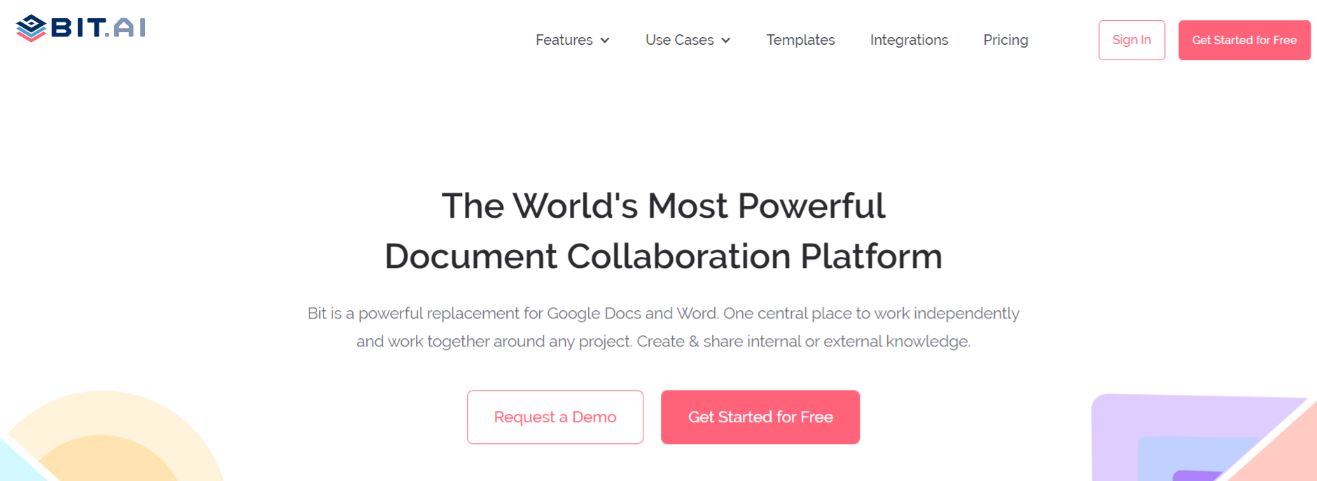You know how your best friends would react to a particular scenario. You can predict their moment and response to a certain situation, right?
That’s because you’ve had a lot of interactions, conversations, and confrontations with your friends! Apparently, understanding a ‘user persona’ is pretty much similar to understanding your best friends.
Whether you’re building software or a cosmetic product, it can only be successful when you know everything about the one who’s going to use it.
You’ve to know where your users are, what motivates them the most, what delights them, and what puts them off. A user persona reveals more about user characteristics, behaviors, needs, goals, and attitudes.
Eager to learn more about user personas? You’re at the right place. In this blog post, we will walk you through everything you need to know about user personas. Buckle up, folks. You’re in for a ride!
What Exactly are User Personas?
User personas are research-based fictional representations of people who are most likely to buy your products and services. It is based on real-life behaviors, values, pain points, needs, concerns, and problems.
In other words, user personas illustrate who the buyers are, what they want to accomplish, what drives their behavior, how they buy, how they think, and what motivates them to buy a product.

User personas are also referred to as buyer personas, customer profiles, customer personas, or just personas. They all mean the exact same thing – archetypal representations of buyers based on real data.
Well, now that you know what user personas are, let’s head over to the next section – why you should spend your time on creating user personas.
3 Reasons Why You Should Create User Personas?
1. Objectivity is Key
See, a user persona is always built using qualitative and quantitative research, which ultimately helps you create an objective description of the buyer.
Basically, when you’re creating a persona, you collect objective data from your target audience about their needs, wants, demographics, aspirations, motivations, habits, and more.
Well, as the data is coming directly from the audience, it would be unbiased and accurate! The persona won’t just be a reflection of the one who’s writing the persona.
Read more: Market Targeting: What is it & How to do it Perfectly? (Steps Included)
2. Makes Selling Easier
The most amazing benefit of user personas is that it helps you understand your target audience’s needs and wants quickly. If you can describe and empathize with your target customers, selling would become easier!

In short, user personas make the entire advertising and marketing process more efficient. Why? Because when you understand the needs of your target audience, it’s easier to create a marketing mix that appeals to them.
3. B2B & B2C Marketing
User personas play a super important role in both B2B and B2C marketing. In B2C marketing, a user persona represents an individual’s needs, wants, and concerns.
However, in B2B marketing, user personas can get a little complex. A B2B user persona requires more data, such as the company’s demographics, the buyer’s demographics, the position of the company, and more.
It’s certainly worth the effort because these personas would make marketing and selling more efficient! Moreover, they will help you understand who your target audience is and you can use your marketing budget more efficiently.
Tip: The buyer’s journey is quiet longer in the B2B sector, so you can create multiple personas who are involved every step of the way, such as users, purchasing departments, and decision-makers.
Are you ready to create your own user personas? We know you are! In the next section, we’re going to walk you through the steps you need to follow to create the best user personas.
How to Create A User Persona in 3 Easy Steps?
Step 1. Conduct User Research
First things first, you need to conduct user research. User research can be done in many forms, including surveys, questionnaires, interviews, and more.
Basically, you need to find out the needs, wants, and opinions of your customers. If you own a website, you can even use analytics tools to find out demographic information of customers interacting with your website.
If your business is specialized, it’s always a good idea to talk to your target audience directly. You can send surveys over the phone, or ask your existing clients about their experience with your product/service.
Step 2. Analyze Data & Identify Patterns
Once you’re done with the research, it’s time to analyze. When you’re analyzing the data, different needs/personality types will come up. Keep looking for patterns and overarching themes!
In simple words, if you see a lot of comments or complaints related to a particular problem, jot it down. If you see a similarity between the types of users that you interact with, jot it down…and the list goes on and on.
Step 3. Start Creating Personas
A user persona needs to be more than just a bunch of data – it needs to have a human touch. You have to create a solid character for each category that you’ve defined in the last step.
To humanize your user personas, you can build a template that describes the personifying aspects of your characters. Want to know what aspects we’re talking about? Read on!
Read more: Target Audience: What is it and How to Find them? (Steps Included)
The 8 Primary Elements of a User Persona
1. A Name
Giving your user persona a name is a giant step forward in humanizing your persona. When your personas have a proper name, it will become much easier to relate to them and talk about them in your marketing discussions.
2. Personal & Professional Background
Now, you need to define what your target customer/user persona does for a living. This would influence your persona’s buying choices. You can also include information about your persona’s hobbies, likes, and dislikes.
3. Demographics
You’re creating a fictional character, so be specific about his age, gender, education, family status, ethnicity, and so on. You can create multiple personas to represent other customer groups.
4. Goals
Note down the goals and aspirations of your persona. Usually, these goals are bigger than the immediate problem that your company solves.

For example, while Company ‘X’ sells a CRM software, their customers’ goal is to create a successful company.
5. Needs, Wants, Concerns & Pain Points
Ask yourself: in order to reach the goals that you’ve defined for your persona, what do they need or want? Once you find the answer, write it down! You also need to mention the concerns of your target user – are they worried about the return process, security, reliability of your product, or something else?
6. Past Buying Behavior
Here are some questions that will help you understand the buying behavior: Do your customers buy from your repeatedly or just one-time? Do they have brand loyalty? Has your product solved their problems in the past?
7. Physical, Social & Technological Environment
Your persona’s environment plays a huge role in who they are, so it’s something that should never be overlooked. This information will help you create a rock solid-picture of your persona and how they will interact with your product or service.
9. A Photo
Lastly, to seal the human deal, put a face to each of your personas. As we said above, your persona needs to seem real, and adding a picture helps you accomplish just that!
Now, let’s be honest – creating user personas can get very overwhelming, especially when you’re already swamped with other work.
So, what if we tell you that there’s a tool out there that simplifies the entire process of building user personas. Curious to know what we’re talking about? Read on!
Bit.ai – The Tool That Will Assist You in Creating User Personas (And Every Other Document)
Looking to up your user persona game? Bit.ai is just what you need! This highly intuitive and interactive tool centralizes all your tasks related to creating user personas – be it formatting, co-editing, organizing, and sharing!
 Using Bit.ai, you can create solid user personas, organize all your research data under workspaces, and work on the personas with your team in real-time, and more!
Using Bit.ai, you can create solid user personas, organize all your research data under workspaces, and work on the personas with your team in real-time, and more!
Now buckle up, because we’re going to elaborate on these mind-blowing features of Bit.ai:
1. Workspaces & Folders: Research data, survey results, audience segments – there are hundreds of documents that you have to take care of while creating user personas. This is why this feature of Bit is the best. On Bit, you can create infinite workspaces around projects, teams, and departments to keep all your work organized.
2. Pre-Built, Beautiful & Fully-Responsive Templates – Bit offers 90+ gorgeous document templates and takes care of the design and formatting aspect for you. Just focus on your research and content, and leave it to Bit to do the rest!
3. Real-Time Collaboration: Okay, this is probably one of the coolest features of Bit. (Who are we kidding? Every feature of Bit is cool.) Using Bit, you can collaborate with your team in real-time and keep your entire team on the same page – no matter where they are. You can co-edit, make inline comments, and much more!
4. Interactive Documents: Want to make your user personas more comprehensive and detailed? Just embed rich media in them and make them come alive. You can add videos from the interviews you took, your audiences’ social media posts, charts, surveys, polls – basically any kind of rich media you can think of in your Bit document!
All in all, Bit.ai is definitely the tool you can fall back on when you want to create user personas and any other type of document that exists on the planet.
Wrapping Up
Whether your target audience is consumers or corporate users, user personas can help you understand and solve the problems and challenges they face.
User personas are a quick and efficient way to reach your target market, understand their perception and behavior and make better marketing and business decisions!
By the way, if you’ve any queries, concerns, or suggestions, hit us up on Twitter @bit_docs. We would be happy to help you out. Cheers!
Further reads:
Marketing Budget: What it is & How to Put it Together?
Marketing Research: Definition, Process & Tools!
Management Plan: Definition, Benefits & How To Create One?



